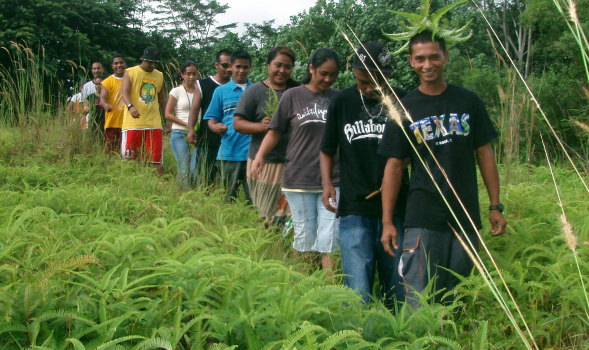
svp hike
This term we examined Nostoc around the transformer in front of the LRC, and then went on to look at moss on a nearby tree that also featured two types of lichens.
On the way to the trailhead Nostoc was seen in the planter in front of the gym.

svp hike
The class stopped on the ridgeline to view the lycopodium Lycopodiella cernua and the sun-loving fern Dicranopteris linearis. Lycopodium is a member of the division Lycopodiophyta, the ferns are members of division Pteridophyta.
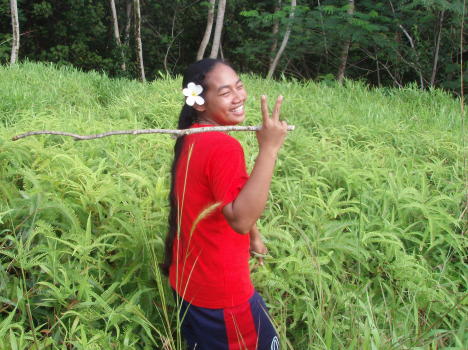
Stephanie Fredrick among the Dicranopteris linearis
The class then paused at the top of the steep slope where Nephrolepis spp. and Thelypteris maemonensis were observed and discussed. Local uses and meanings of these plants was also discussed, along with names in the local languages. The local names for Microsorum scolopendria, its use as a mwarmwar, and the function the plant had as a mwarmwar in protecting the dancer from soumwahuen eni were covered. A plant known locally as marekenleng was located on a tree, this plant is currently listed in the virtual herbarium as Asplenium pellucidum. Also found atop the steep slope was Davallia solida (ulung en kieil). The term devolution was introduced as meaning a loss of language and of culture. of the language, but that alternately it could have been the result of an intentional obfuscation. This term there were no mature Asplenium nidus atop the slope. Asplenium nidus was encountered as we descended the slope.
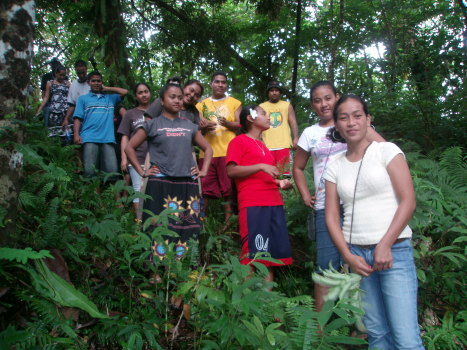
On the slope
Clambering down the slippery muddy slope, I located a small Vittaria tucked away on the downhill side of a tree fairly far down the slope on the left. This was a different plant from the one I had seen a term ago.
This term I again opted not to take role or do any paperwork, but to hit the trail at 3:30 to maximize our time in the woods. I had warned the class not to bring books. Although in the spring we locked backpacks in the supply closet, this term students put backpacks in my office. Mary Allen then moved them to the conference room for security. This again provided me time to slow down and examine the trees more closely. Down in the forest I again found the epiphyte Huperzia phlegmaria. This term I did not locate the Psilotum complanatum nor the Humata banksii that had been on the same small tree as the Huperzia phlegmaria. H. phlegmaria, however, appeared to be growing well both low and high on a tree off to the left. The mahrek en leng was still present.
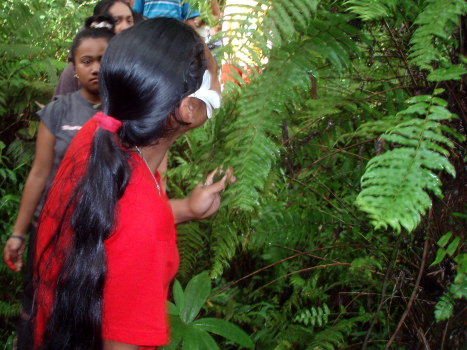
Stephanie takes a close look at epiphytic ferns. A Vittaria was tucked away on the back side of the tree she is examining.
Father along the trail a discussion was held on the uses of the tree fern Cyathea nigricans.
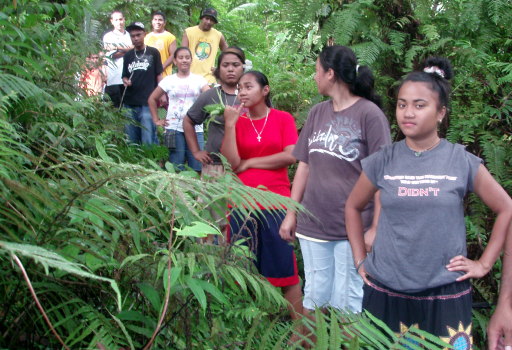
Kyoko Talley
I then took the class down to the river and up to the Antrophyum plantagineum. Not finding the Psilotum and Humata apparently "bought" a few extra minutes as we reached the A. plantagineum at 16:28. No one knew its name, no one had seen this fern before. I then took role and dismissed the class.